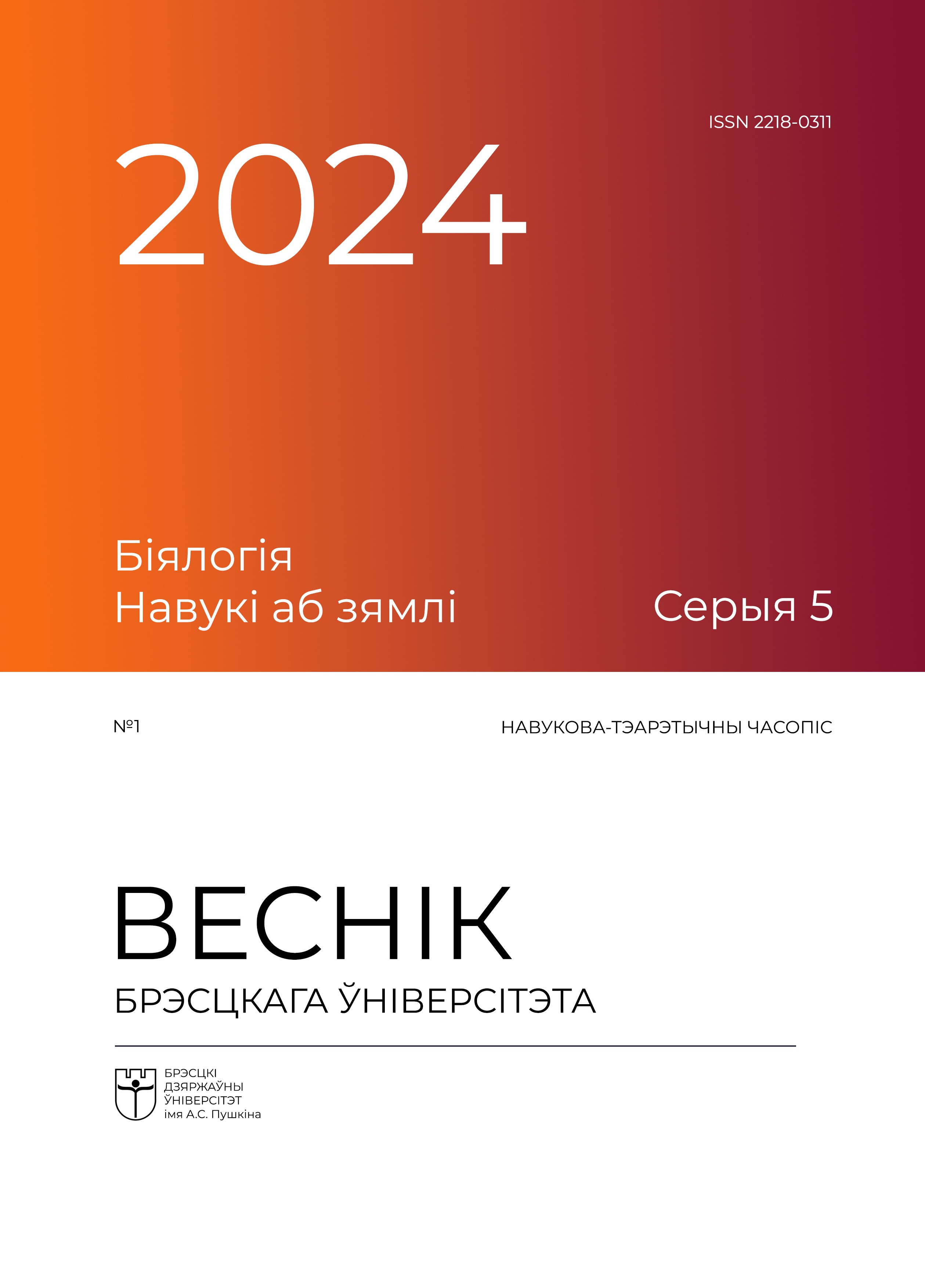ОСОБЕННОСТИ СИНТЕЗА ШИКИМОВОЙ КИСЛОТЫ БАКТЕРИЯМИ BACILLUS SUBTILIS С ИНАКТИВИРОВАННЫМ ГЕНОМ ШИКИМАТКИНАЗЫ
Основное содержимое статьи
Аннотация
В результате выполнения настоящего исследования у штаммов бактерий с инактивированным геном шикиматкиназы B. subtilis 168wt21CSA и В. subtilis 5434p4SA была произведена оценка эффективности синтеза шикимовой кислоты в зависимости от условий культивирования и состава питательной среды. В условиях прерывистого культивирования оценен вклад влияния концентраций источника углерода (глюкозы) и концентраций аминокислот на титр шикимовой кислоты в ферментационной среде. Продемонстрировано, что в проанализированном диапазоне концентраций источника углерода биомасса бактерий и выработка шикимовой кислоты прямо пропорциональны внесенному количеству глюкозы. L-Phe, L-Trp и L-Tyr как конечные продукты пути метаболизма шикимовой кислоты при более высокой концентрации могут оказывать ингибирующее действие на продукцию шикимовой кислоты, вероятно, по принципу ретроингибирования. Эти результаты позволили подобрать условия для синтеза шикимовой кислоты (2 % глюкозы и 12,5 мкг/мл аминокислот), позволяющие увеличить ее содержание в культуральной среде до 808 мкг/мл для штамма B. subtilis 168wt21CSA и до 1385 мкг/мл для штамма В. subtilis 5434p4SA.
Информация о статье
Библиографические ссылки
1. Jennifer, L. Influenza neuraminidase inhibitors: antiviral action and mechanisms of resistance / L. Jennifer, B. McKimm // Influenza Other Respir Viruses. – 2013. – P. 25–36.
2. Bradley, D. Star role for bacteria in controlling flu pandemic / D. Bradley // Nat Rev Drug Discov. – 2005. – Vol. 4. – P. 945–946.
3. Liquidambar styraciflua: a renewable source of shikimic acid / L. B. Enrich [et al.] // Tetrahedron Lett. – 2008. – Vol. 49. – P. 2503–2505.
4. An interactive study of inflfluential parameters for shikimic acid production using statistical approach, scale up and its inhibitory action on different lipases / G. Rawat [et al.] // Bioresour Technol. – 2013. – Vol. 144. – P. 675–679.
5. A natural isolate producing shikimic acid: isolation, identifification and culture condition optimization / G. Rawat [et al.] // Appl Biochem Biotechnol. – 2013. – Vol. 169. – P. 2290–2302.
6. Rawat, G. Expanding horizons of shikimic acid: recent progresses in production and its endless frontiers in application and market trends / G. Rawat, P. Tripathi, R. K. Saxena // Appl. Microbiol. Biotechnol. – 2013. – Vol. 97. – P. 4277–4287.
7. Ghosh, S. Production of shikimic acid / S. Ghosh, Y. Chisti, U. C. Banerjee // Bio- technol. Adv. – 2012. – Vol. 30. – P. 1425–1431.
8. Kai, C. Deletion of the aroK gene is essential for high shikimic acid accumulation through the shikimate pathway in E. coli / C. Kai // Bioresource Technology. – 2012. – Vol. 119. – P. 141–147.
9. Metabolic engineering for the production of shikimic acid in an evolved Escherichia coli strain lacking the phosphoenolpyruvate: carbohydrate phosphotransferase system / A. Escalante [et al.] // Microb Cell Fact. – 2010. – Vol. 9, № 1. – P. 21–33.
10. Metabolic flux responses to genetic modification for shikimic acid production by Bacillus subtilis strains / D. F. Liu [et al.] // Microbial Cell Factories. – 2014. – Vol. 13, nr 1. – P. 40–51.
11. Deletion of the aroK gene is essential for high shikimic acid accumulation through the shikimate pathway in E. coli / K. Chen [et al.] // Bioresour. Technol. – 2012. – Vol. 119. – P. 141–147.
12. Metabolic engineering of Escherichia coli for improving shikimate synthesis from glucose / X. Chen [et al.] // Bioresour Technol. – 2014. – Vol. 166. – P. 64–71.
13. Metabolic engineering for microbial production of shikimic acid / M. Kramer [et al.] // Metab. Eng. – 2003. – Vol. 5. – P. 277–283.
14. Hydroaromatic equilibration during biosynthesis of shikimic acid / D. R. Knop [et al.] // J. Am. Chem. Soc. – 2001. – № 123. – P. 10173–10182.
15. US Food and Drug Administration. Carbohydrase and protease enzyme preparations derived from Bacillus subtilis or Bacillus amyloliquefaciens // Affirmation of GRAS Status as direct food ingredients. – 1999. – Vol. 64, nr 78. – P. 19887–18895.
16. Chao, Y. Analysis of the efficiency factors of electro-transformation of Bacillus subtilis to inactivate the aroK gene by the method of homologous recombination / Y. Chao, A. V. Lahodzich // Journal of the Belarusian State University. Biology. – 2021. – № 2. – P. 64–73.
17. Spizizen, J. Transfomtiom of biochemically deficient strains of Bacillus subtilis by deoxyribonucleate / J. Spizizen // Pathology And Microbiology. – 1958. –Vol. 44, nr 10. – P. 1072–1078. – DOI: 10.1073/pnas.44.10.1072.
18. Extraction and chromatographic determination of shikimic acid in Chinese conifer needles with 1-benzyl-3-methylimidazolium bromide ionic liquid aqueous solutions / F. L. Chen [et al.] // Journal Of Analytical Methods in Chemistry. – 2014. – P. 12.
19. Çiğdem, A. Quantification of shikimic acid in the methanolic extracts of three alnus taxons growing in Turkey / A. Çiğdem, E. Ö. Burçin, L. A. Mehmet // Turkish Journal of Pharmaceutical Sciences. – 2016. – Vol. 13, nr 1. – P. 71–76.
